Table of Contents
Understanding the Basics of Meatloaf Structure
Introduction
Perfect Meatloaf has been a staple of home-cooked meals for decades, providing comfort, nourishment, and versatility. Whether served as the centerpiece of a family dinner or repurposed as leftovers, it’s a dish that resonates with many. However, achieving the perfect meatloaf can be a culinary challenge, especially when it comes to keeping it from falling apart. Let’s delve into the secrets of creating a perfectly structured meatloaf that holds its shape and delivers on taste.
1.1 What Makes Meatloaf a Classic Dish?
Meatloaf’s enduring popularity lies in its simplicity and adaptability. Originating from the concept of combining ground meat with binders and flavor enhancers, it has evolved into countless variations across cultures. Ingredients such as breadcrumbs, eggs, and seasonings make it a canvas for creativity.
Beyond its versatility, meatloaf embodies nostalgia. For many, it evokes memories of family dinners, hearty comfort food, and the joy of a homemade meal. This timeless appeal ensures that meatloaf remains a beloved classic in kitchens worldwide.
1.2 Common Issues with a Perfect Meatloaf Texture
Despite its straightforward preparation, meatloaf often falls victim to textural issues. The most common problems include:
- Crumbly Texture: A lack of binding agents can lead to a meatloaf that disintegrates when sliced.
- Dryness: Insufficient moisture can result in a dense, unappetizing loaf.
- Greasiness: Using fatty meats without balancing with leaner cuts or absorbent fillers can cause excessive oil.
Understanding these pitfalls is crucial to mastering the art of meatloaf-making. Addressing these issues begins with choosing the right ingredients and understanding their roles.
The Role of Ingredients in Meatloaf Stability
2.1 Why Does Meatloaf Fall Apart?
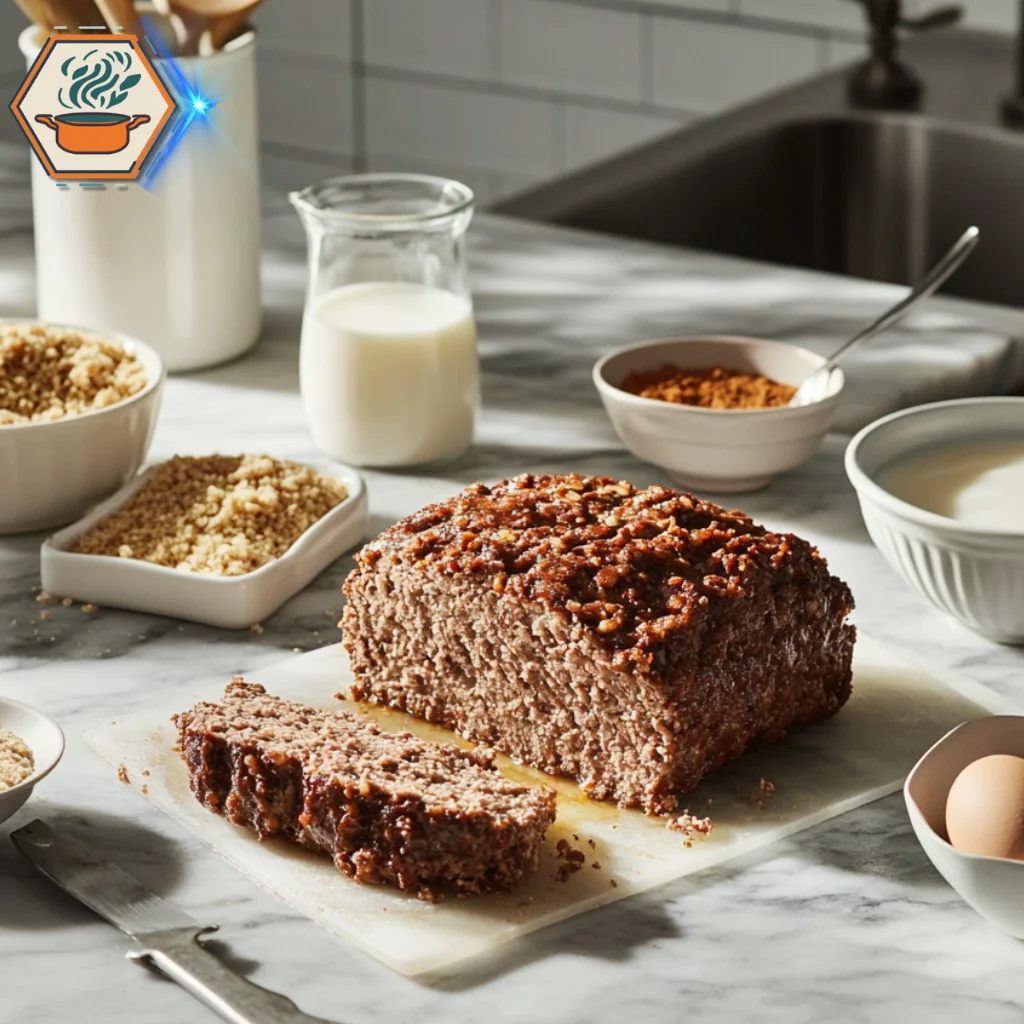
At its core, meatloaf is a combination of proteins, fats, and carbohydrates. When these components are improperly balanced, structural integrity suffers. Here are some common reasons why meatloaf falls apart:
- Insufficient Binding Agents: Ingredients like eggs and breadcrumbs are critical for holding the mixture together. Without them, the meat lacks cohesion.
- Overmixing: Excessive mixing can break down the protein structure, leading to a crumbly texture.
- Improper Cooking: Overcooking or uneven heat distribution can cause the meatloaf to lose moisture and stability.
To prevent these issues, it’s essential to understand the role of each ingredient in creating a firm and flavorful loaf.
2.2 Key Components for Binding a Perfect Meatloaf
The secret to a perfectly structured meatloaf lies in its binding agents. These ingredients act as the glue that holds everything together:
- Eggs: Often referred to as nature’s glue, eggs provide protein and moisture, creating a cohesive mixture.
- Breadcrumbs: A traditional binder, breadcrumbs absorb moisture while adding structure and texture.
- Milk or Dairy: Combining milk with breadcrumbs creates a paste that enhances binding while adding richness.
- Vegetables: Finely grated onions, carrots, or celery not only add flavor but also contribute to moisture and stability.
By balancing these components, you can achieve a meatloaf that’s both firm and moist. Check out our guide : Is It Better to Cook Meatloaf at 350 or 375?
The Magic Ingredient: What Keeps Meatloaf from Falling Apart
3.1 Essential Properties of Binding Agents
Binding agents work by creating a network that holds the meat and other ingredients together. Here’s what makes them effective:
- Protein Content: Eggs and dairy products supply proteins that solidify during cooking, creating a stable matrix.
- Absorption: Breadcrumbs and similar fillers soak up excess moisture, preventing sogginess.
- Adhesion: Certain ingredients help stick particles together, ensuring a unified loaf.
Understanding these properties allows you to experiment with substitutes or enhancements for dietary preferences, such as gluten-free breadcrumbs or flaxseed as an egg replacement.
3.2 How They Work in Harmony with Other Ingredients
Binding agents don’t work alone; their effectiveness depends on their interaction with other ingredients. Consider the following:
- Meat: A mix of lean and fatty cuts ensures flavor without compromising structure. Too much fat can weaken the loaf.
- Seasonings: Salt, pepper, and herbs enhance flavor without affecting stability, but balance is key.
- Cooking Technique: Slow, even cooking ensures that the binding agents activate properly, preventing collapse.
For a deeper dive into how ingredients interact in other recipes, visit this informative Wikipedia article on food chemistry.
Key Ingredients That Stabilize Meatloaf
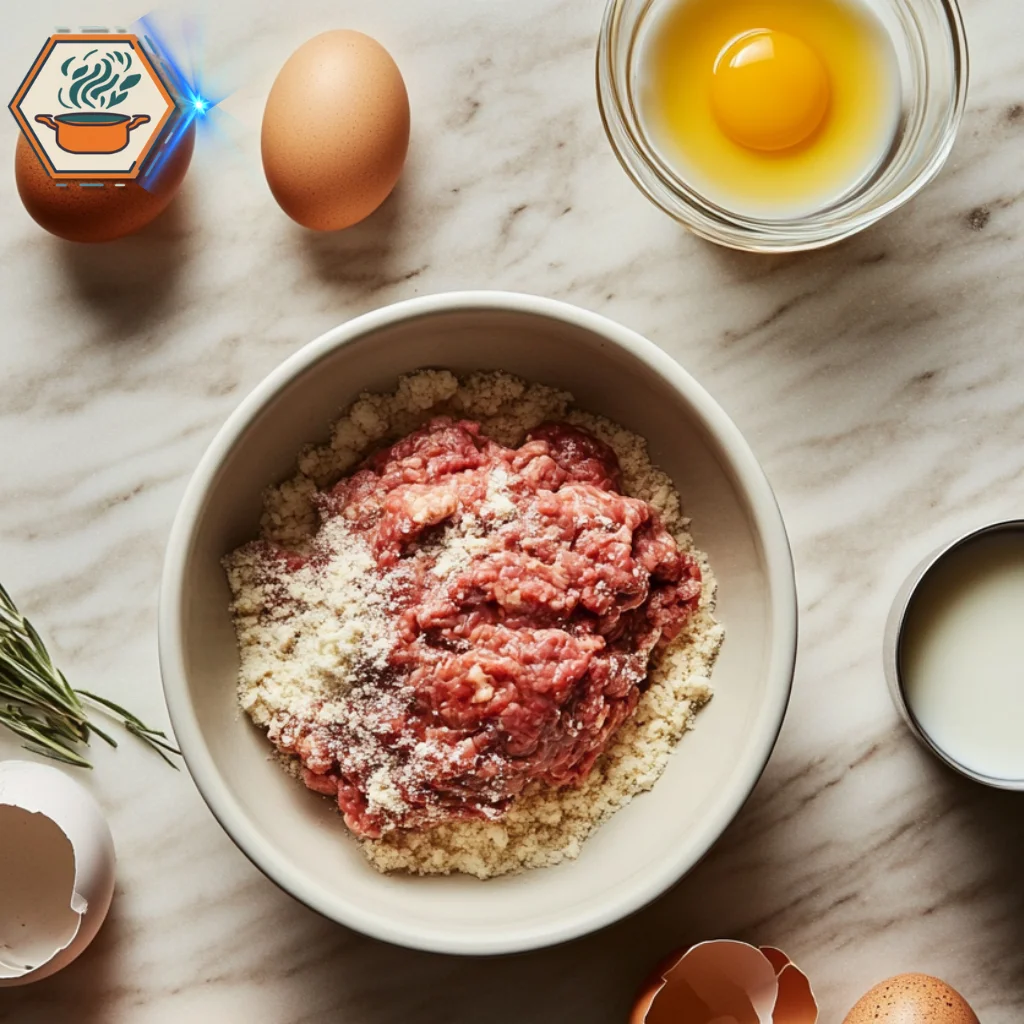
Creating the perfect meatloaf goes beyond just combining ingredients—it’s about understanding how these components work together to achieve a cohesive, delicious dish. This section explores the top ingredients that bind meatloaf, enhance stability, and ensure it holds its shape without compromising flavor.
Top Ingredients for Binding Meatloaf
4.1 Breadcrumbs: The Traditional Hero
Breadcrumbs are a staple in meatloaf recipes for a reason. They act as a sponge, absorbing moisture and locking it in, which prevents the meatloaf from becoming too dry. Additionally, breadcrumbs help distribute the fat evenly, ensuring a tender and cohesive texture.
Types of Breadcrumbs:
- Plain breadcrumbs: A neutral option that works well with most recipes.
- Panko breadcrumbs: These provide a lighter texture while maintaining excellent binding properties.
- Seasoned breadcrumbs: Great for adding extra flavor to your meatloaf.
4.2 Eggs: Nature’s Glue for a Perfect Meatloaf
Eggs are one of the most critical binding agents in meatloaf. Their proteins coagulate during cooking, creating a firm structure that holds the ingredients together. Additionally, eggs add richness and moisture to the mixture, ensuring the meatloaf is not overly dense or crumbly.
Tips for Using Eggs:
- Use large eggs for optimal binding.
- For added moisture, consider mixing the eggs with milk or broth before combining them with the other ingredients.
- If you’re making a large meatloaf, increase the number of eggs proportionally to maintain stability.
4.3 Dairy (Milk, Cheese): Adding Moisture and Stability
Dairy products, such as milk and cheese, play a dual role in meatloaf—adding creaminess and enhancing stability. When combined with breadcrumbs, milk forms a paste that integrates seamlessly into the meat mixture. Cheese, particularly grated varieties, can add both flavor and additional binding power.
Dairy Options:
- Whole milk: Best for creating a rich, moist meatloaf.
- Cheese (parmesan, cheddar): Adds flavor depth and subtle binding.
- Yogurt or sour cream: Ideal for a tangy twist and added moisture.
4.4 Alternatives for Gluten-Free or Vegan Options
For those with dietary restrictions, there are plenty of alternatives to traditional binders:
- Gluten-Free: Use almond flour, gluten-free breadcrumbs, or rolled oats.
- Vegan: Substitute eggs with flaxseed meal or chia seeds mixed with water (1 tablespoon of seeds + 3 tablespoons of water = 1 egg).
- Nut-Based: Finely ground nuts like walnuts can add both texture and binding properties.
These substitutions ensure that everyone can enjoy a perfectly structured meatloaf, regardless of dietary preferences.
Enhancing Stability with Secondary Ingredients
5.1 Vegetables: Adding Texture Without Breaking Structure
Finely grated or minced vegetables, such as onions, carrots, and celery, can enhance both flavor and texture. When cooked, these vegetables release moisture, preventing the meatloaf from drying out.
Best Practices:
- Use a box grater or food processor to achieve fine pieces that blend seamlessly.
- Sauté the vegetables before adding them to release their natural sweetness and prevent excess moisture during baking.
5.2 Herbs and Spices: Flavor and Binding Benefits
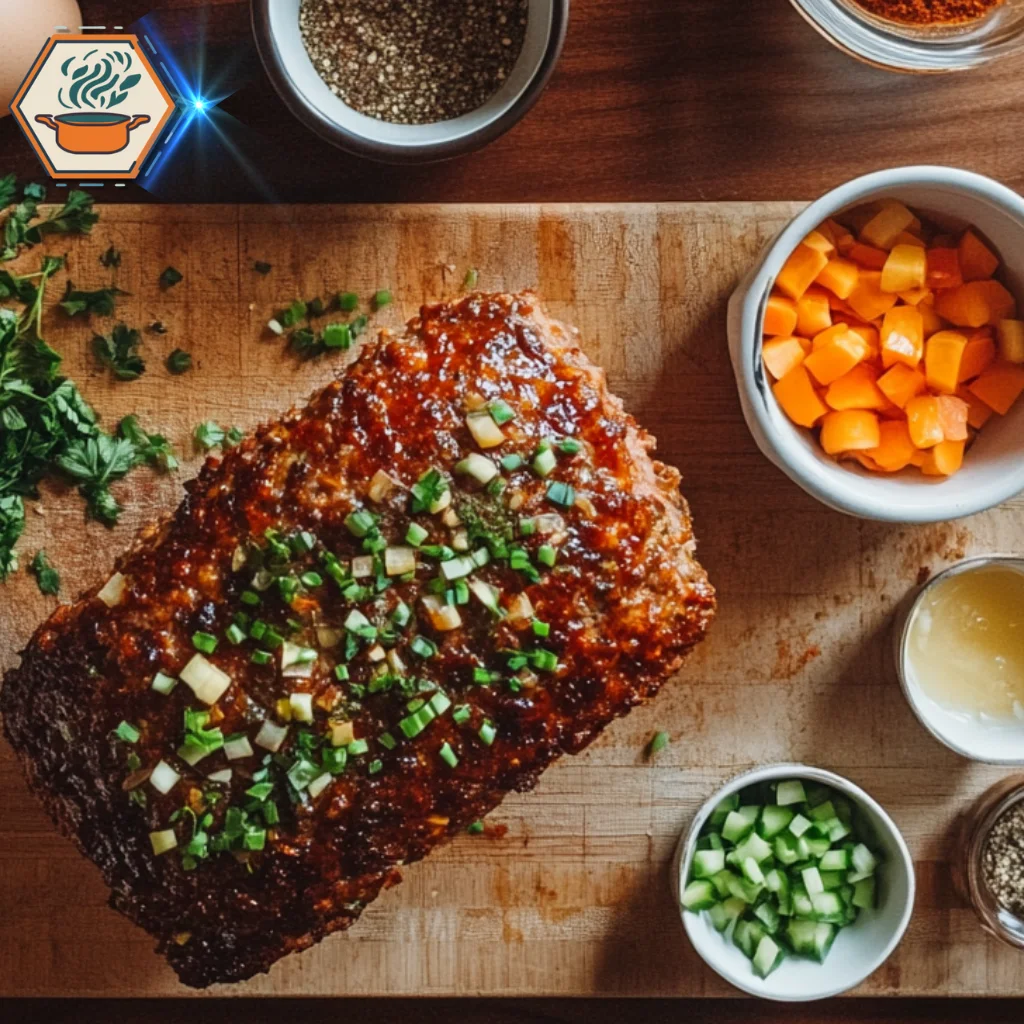
While herbs and spices primarily enhance flavor, they can also play a role in stabilizing meatloaf. Fresh herbs like parsley and thyme add moisture, while spices such as paprika and garlic powder create a cohesive flavor profile.
Pro Tip: Combine fresh herbs with breadcrumbs to create a herbaceous binder that’s both functional and flavorful.
5.3 Fats: Their Role in Maintaining Consistency
Fats, whether from the meat itself or added ingredients, are essential for a moist and tender meatloaf. However, balance is key—too much fat can make the loaf greasy, while too little can cause dryness.
Recommended Ratios:
- Opt for a meat mixture with a fat content of around 15-20%.
- Incorporate small amounts of olive oil or butter for added richness.
Ingredient Ratios and Techniques
6.1 Balancing Wet and Dry Ingredients
The perfect meatloaf requires the right balance between wet and dry ingredients. Too many wet ingredients can make the loaf soggy, while too many dry components can lead to a crumbly texture.
Optimal Ratios:
- For every pound of meat, use 1 cup of breadcrumbs and 1 egg.
- Adjust liquid ingredients (milk, broth) based on the moisture content of other components.
6.2 How Overmixing Affects a Perfect Meatloaf Stability
Overmixing is a common mistake that can lead to a dense and tough meatloaf. When the meat mixture is overworked, the proteins break down, making the loaf less cohesive.
Avoid Overmixing:
- Mix the ingredients just until combined.
- Use your hands or a gentle folding motion for even distribution without overworking.
6.3 Pre-Cooking Tricks for Better Structure
Small preparation techniques can make a big difference in the final outcome of your meatloaf:
- Chill the Mixture: Allow the meat mixture to rest in the fridge for 20-30 minutes before shaping and baking. This helps firm up the ingredients.
- Use a Loaf Pan: A pan provides structure during baking, preventing the loaf from spreading.
- Test a Small Portion: Cook a small piece of the mixture in a skillet to test the seasoning and consistency before baking the entire loaf.
For more tips on improving your cooking techniques, visit our GUID : Can I use water instead of milk in meatloaf?
Making the Perfect Meatloaf Every Time
Crafting the perfect meatloaf is a rewarding endeavor, but it requires attention to detail and a willingness to learn from common mistakes. In this guide, we’ll explore practical tips and advanced techniques to help you achieve a meatloaf that’s firm, flavorful, and picture-perfect every time.
Common Mistakes and How to Avoid Them
7.1 Overlooking Key Binding Ingredients
One of the most common reasons for a crumbling meatloaf is neglecting to include adequate binding agents. Ingredients such as eggs and breadcrumbs are crucial for holding the mixture together. Without them, the meatloaf lacks the necessary cohesion to maintain its shape.
How to Avoid This Mistake:
- Always include at least one egg and a cup of breadcrumbs for every pound of meat.
- Experiment with alternative binders, such as cooked quinoa or mashed potatoes, for gluten-free or unique variations.
7.2 Ignoring Proper Resting Time
Cutting into your meatloaf immediately after cooking can cause it to fall apart. Resting allows the juices to redistribute and the structure to firm up, ensuring clean slices and better texture.
How to Avoid This Mistake:
- Let your meatloaf rest for 10-15 minutes after removing it from the oven.
- Use aluminum foil to tent the meatloaf during the resting period, keeping it warm without trapping excess moisture.
Advanced Techniques for a Firm Meatloaf
8.1 Using Parchment Paper and Baking Tricks
Baking your meatloaf directly on a sheet pan or in a loaf pan can lead to uneven cooking and a soggy bottom. Using parchment paper ensures even heat distribution and easy cleanup.
Steps to Try:
- Line your baking sheet with parchment paper, leaving enough excess to lift the meatloaf out easily.
- Form the meatloaf into a free-standing loaf shape for better airflow and even cooking.
- Consider using a rack placed over a sheet pan to allow excess fat to drain.
8.2 Adding Layers for Additional Support
Incorporating layers into your meatloaf can improve its structure and add an element of surprise for your diners. Layers such as cheese, vegetables, or even hard-boiled eggs can create visual and textural interest while reinforcing stability.
Ideas for Layers:
- Spread a layer of mashed potatoes in the middle for a two-in-one comfort dish.
- Use thin slices of cheese, such as mozzarella or cheddar, for a gooey core.
- Add sautéed spinach or kale for an earthy, nutritious twist.
Troubleshooting Guide: Fixing a Falling-Apart Meatloaf
9.1 Quick Fixes Before Baking
If you notice your meatloaf mixture is too loose or wet before baking, there are simple fixes:
- Add More Binder: Mix in additional breadcrumbs or crushed crackers to absorb excess moisture.
- Chill the Mixture: Refrigerate the meatloaf mixture for 20-30 minutes before shaping and baking. This helps the ingredients bind together more effectively.
9.2 Salvaging a Cooked a Perfect Meatloaf
If your meatloaf falls apart after cooking, don’t panic. You can still salvage the dish:
- Serve It Differently: Transform the broken pieces into a delicious meatloaf hash or crumble them into a pasta sauce.
- Bind with Sauce: Mix the pieces with a rich gravy or barbecue sauce and serve as a deconstructed meatloaf.
For more troubleshooting tips, visit this helpful Wikipedia article on food textures.
Recipes and Variations to Try
10.1 Traditional Meatloaf with Classic Binders
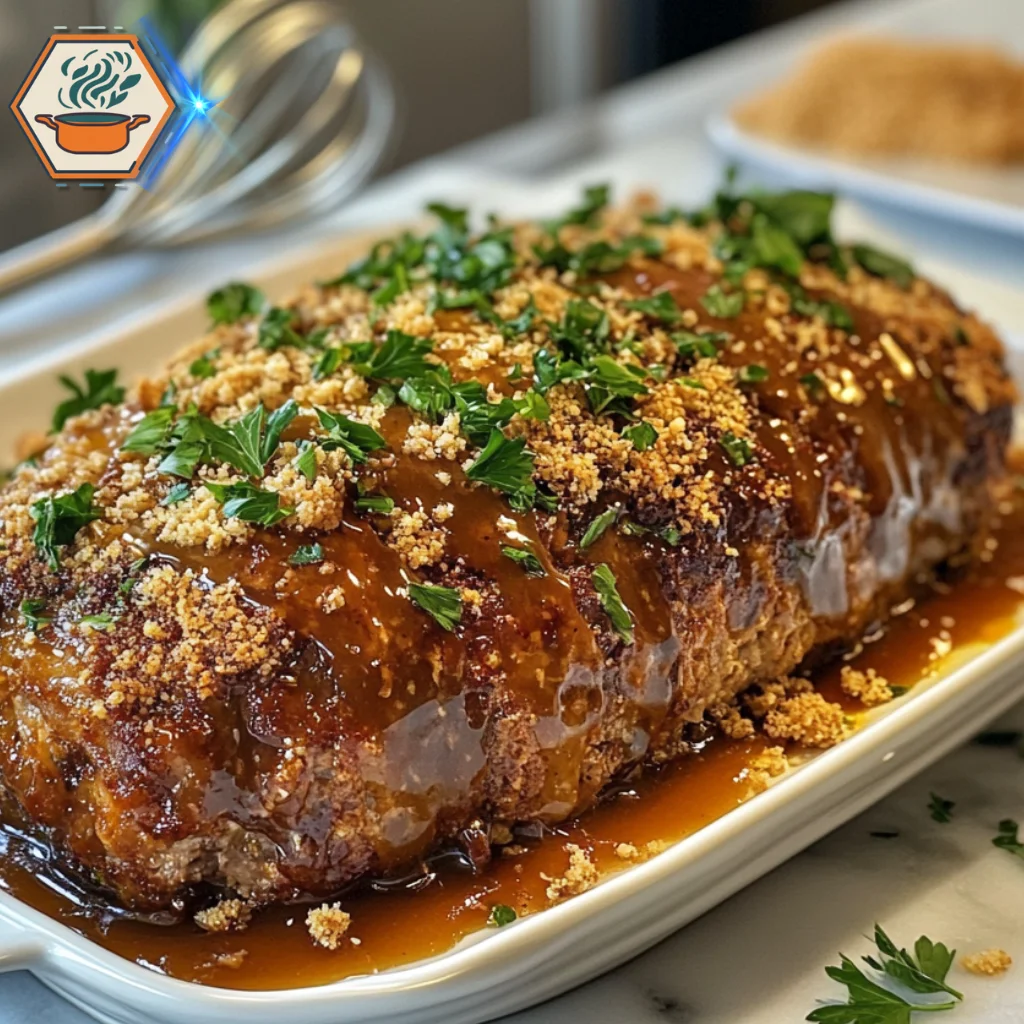
A traditional meatloaf recipe includes ground beef, breadcrumbs, eggs, and a savory glaze. This timeless version remains a favorite for its simplicity and satisfying flavors.
Key Ingredients:
- 1 lb ground beef
- 1 cup breadcrumbs
- 1 egg
- 1/2 cup ketchup or barbecue sauce
10.2 Gluten-Free and Vegan Meatloaf Recipes
For those with dietary restrictions, there are plenty of options to enjoy meatloaf without compromise:
- Gluten-Free: Use almond flour or gluten-free oats instead of breadcrumbs.
- Vegan: Replace meat with lentils or chickpeas and use flaxseed meal as an egg substitute.
Try Our GUIDe What is the secret to a great meat loaf? for a delicious and allergy-friendly alternative.
10.3 Unique Takes on Perfect Meatloaf for Adventurous Cooks
If you’re looking to spice things up, try these creative twists:
- Asian-Inspired Meatloaf: Incorporate soy sauce, ginger, and scallions for a flavor-packed loaf.
- Italian Meatloaf: Add marinara sauce, parmesan cheese, and Italian herbs for a Mediterranean flair.
- Tex-Mex Meatloaf: Mix in taco seasoning, corn, and jalapeños for a zesty kick.

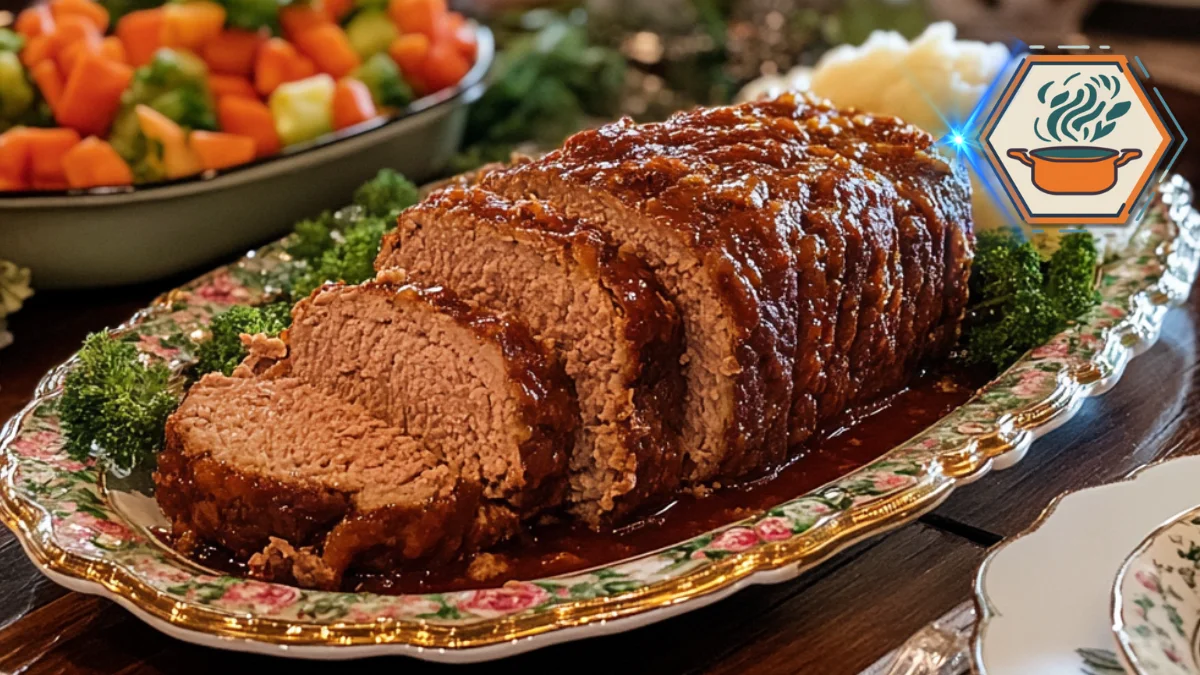
3 thoughts on “What ingredient keeps meatloaf from falling apart?”